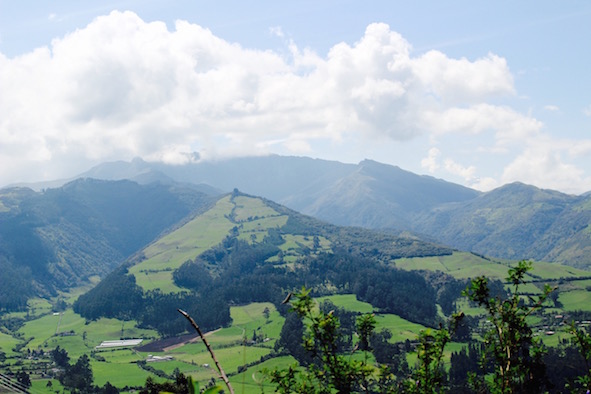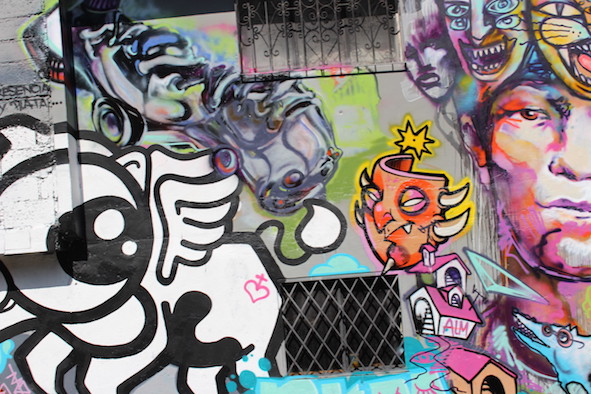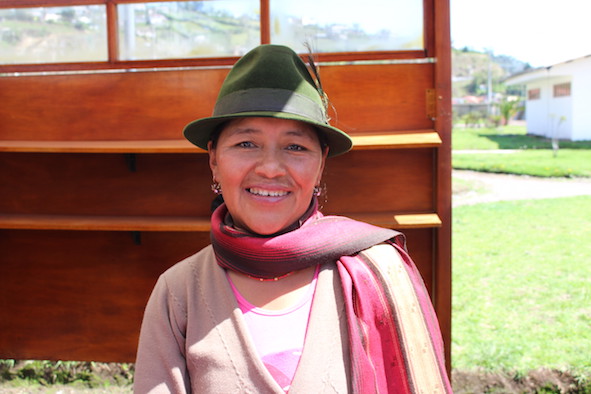Quito’s burgeoning food and culture scene often takes center stage, but, riding Tren Ecuador to Machachi, you find that within minutes of journeying beyond the city limits by train, Ecuador’s serene, artful side emerges.

The Andean foothills (Photo: Tracy Kaler)
Six a.m. is an early start for any trip, but at least the morning was picture-perfect (and 60 degrees). Beneath sunny skies our tour group boarded the Tren de los volcanoes at the century-old, recently restored Chimbacalle station (and museum) in Quito, Ecuador.
Admittedly, as a New Yorker, I’m a little too accustomed to riding trains. Assuming this early morning cavalcade would be just another venture around Ecuador’s metro area (albeit considerably cleaner and more comfortable than any New York subway), I toted my Canon Rebel thinking I’d snag a few shots along the route, not realizing that I was about to have one of the most life-changing and picture-worthy experiences of my time in the country.
The train pulled out of the depot and the mountains quickly drew in. We were, after all, in the heart of the Andean foothills, a range known for its snow-covered peaks – their summits disappearing into undulating cloud – and Cotopaxi, one of the highest, most active volcanoes in the world.
As my international hodgepodge of fellow passengers and I motored through Quito’s south side, urban street scenes blended with a lush, rural landscape. To my right, bold bewitching street art the likes of nothing I’d ever seen before – even in Brooklyn’s trendy, art-infused Williamsburg neighborhood – covered concrete walls and buildings for what seemed like miles. It felt as if I had stumbled upon a street-side gallery crawl, perusing modern and indigenous art from inside the train – yet, turning to look out of the opposite window, I found myself confronted by the looming Andes.

Street art seen from Tren Ecuador (Photo: Tracy Kaler)
Outside, locals rode bicycles through the grassy terrain, peeked out of their windows, and genially waved as the tourist train rattled past. Clotheslines flapped in the breeze. Children played while their guardians looked on, making eye contact through my camera lens for a split second as the train passed by.
Our first layover was at a quaint town called Tambillo where local artisans, operating from an outdoor market camped by the station, sell beads, rope bracelets, and pocketbooks, among other colorful crafts. The ultra-clean restrooms and the market were evidence of the regular stampede of tourists along this route, but after the early start it was nice to have a cool beverage and empanadas de morocho — delicious snacks of grilled or fried corn flour patties filled with meat or cheese.
Rarely can I resist the urge to shop, and so I didn’t. I picked up a few handmade souvenirs from one of the artisans – an Ecuadorian woman with a beautiful face and warm, penetrating eyes – before returning to the train bound for the Aloasi Village near Machachi in the country’s Central Highlands.

Ecuadorian woman selling crafts by the tracks (Photo: Tracy Kaler)
Upon arrival at the more rural destination of Aloasi, we disembarked to be welcomed by folk singers and dancers in indigenous garb performing the traditional Chagra (Dance of the Andean Cowboy) and Hat Dance. Riders donned ponchos, chaps, hats, and brightly colored skirts and blouses. Children and adults executed a simple choreography of turns and twirls in the vacant lot they had transformed into a makeshift stage beside the train tracks. From nearby came the smell of earthy beans and choclo (corn on the cob) being prepared inside the station.
One zaftig little girl stood out as she danced to her own drum, and, for me, instantly became the star of the revue. Concentrating hard so as not miss a step, the child never smiled, yet she was the most amusing character in the troupe as she romped and whirled.
Post-performance, we wandered to a charming 19th-century inn on a working farm, complete with goats, horses, and alpacas. The hacienda and its unspoiled parcel sit at the base of the Corazón Volcano on the western slopes of the Andes. Wandering in the green fields, admiring the rolling hills of Aloasi, we had now made a complete departure from the urban, the enclosed. Out of the beautiful day, a storm suddenly churned, the wind picked up and clouds gathered at a remarkable pace. If you’ve heard about the unpredictability of Ecuador’s weather, I can confirm that four seasons in a single day is not uncommon.
We dashed for the restaurant to avoid the imminent downpour. Beneath the beams of the rustic farmhouse building, I ate a hearty and comforting potato-cheese soup called locra de papa. Seated at the front of the dining room, three guitarists entertained a crowd made up of tourists as well as locals.
Full up with locra de papa washed down with Malbec, I walked outside for a final look before our return trip departed. Miraculously, the rain had held off. The tourism industry is vital to a developing country like Ecuador, and perhaps the weather, too, has a deal with the tourism board…
Tren Ecuador hosts a broad range of tours. Some are one-day excursions while others include overnight stays. Tren Ecuador provides a close-up look at the country’s landscape, people, and traditions, allowing each passenger to become immersed in Ecuadorian culture. A ticket for Tren de los volcanoes costs $50.40. For more information, visit www.trenecuador.com.